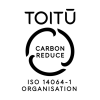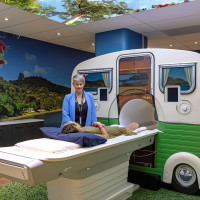Your Examination
A skilled, qualified mammographer will take at least two images of each breast. Each breast is gently placed on the mammography machine and lightly compressed with a plastic paddle. This flattening of the breast reduces the breast thickness and holds the breast still, which reduces the radiation dose and optimises the quality of the image.
Most women describe the compression as uncomfortable, rather than painful. If you find the compression painful, please discuss your concerns with the mammographer who will make every effort to eliminate any distress.
Sometimes further mammograms are needed to show an area of the breast more clearly. Don't be overly concerned if this occurs. An ultrasound scan may also be necessary to complete your examination.
Post Examination
After the images are taken, you will be asked to wait until the mammographer has viewed them to see if any more are needed.
Your images will then be read independently by at least two Radiologists and a report will be sent to your referring doctor.
A small number of women will need further investigations after a mammogram. This may be additional mammography or an ultrasound. A recall does not mean you have breast cancer. If you require further imaging we will be in contact with you.

















